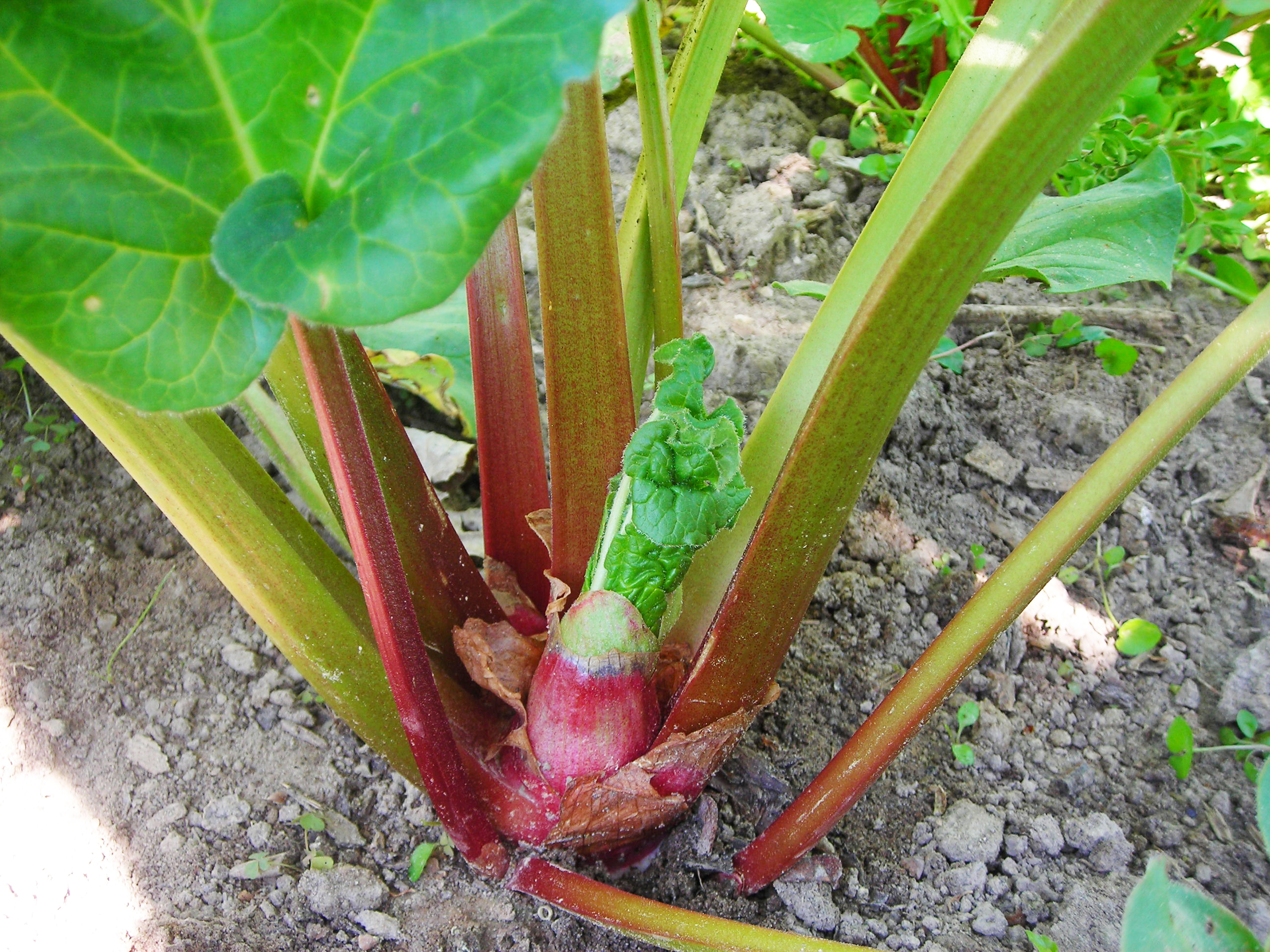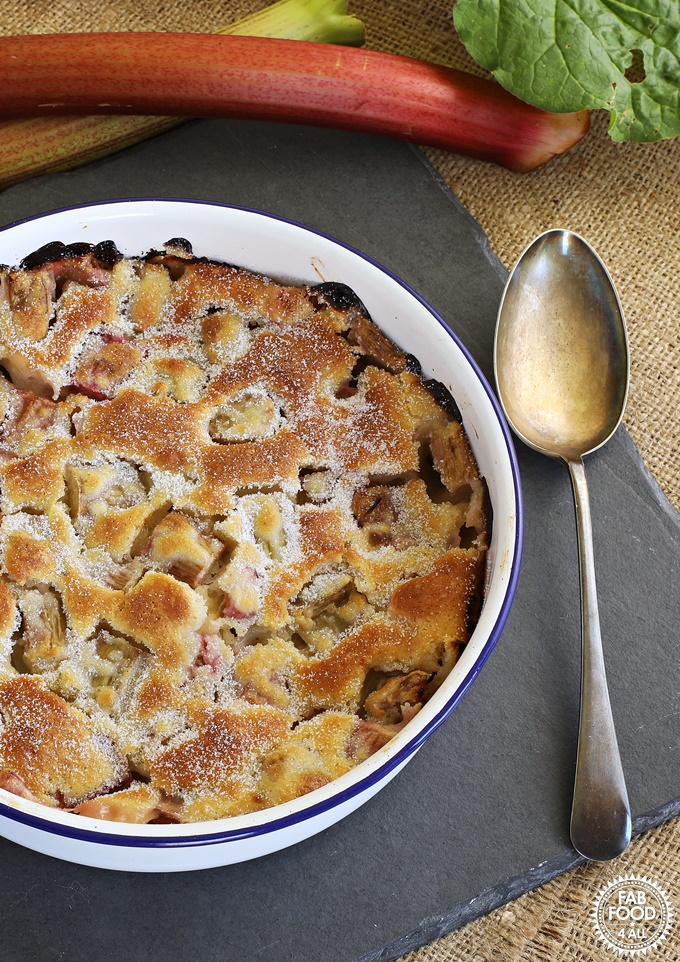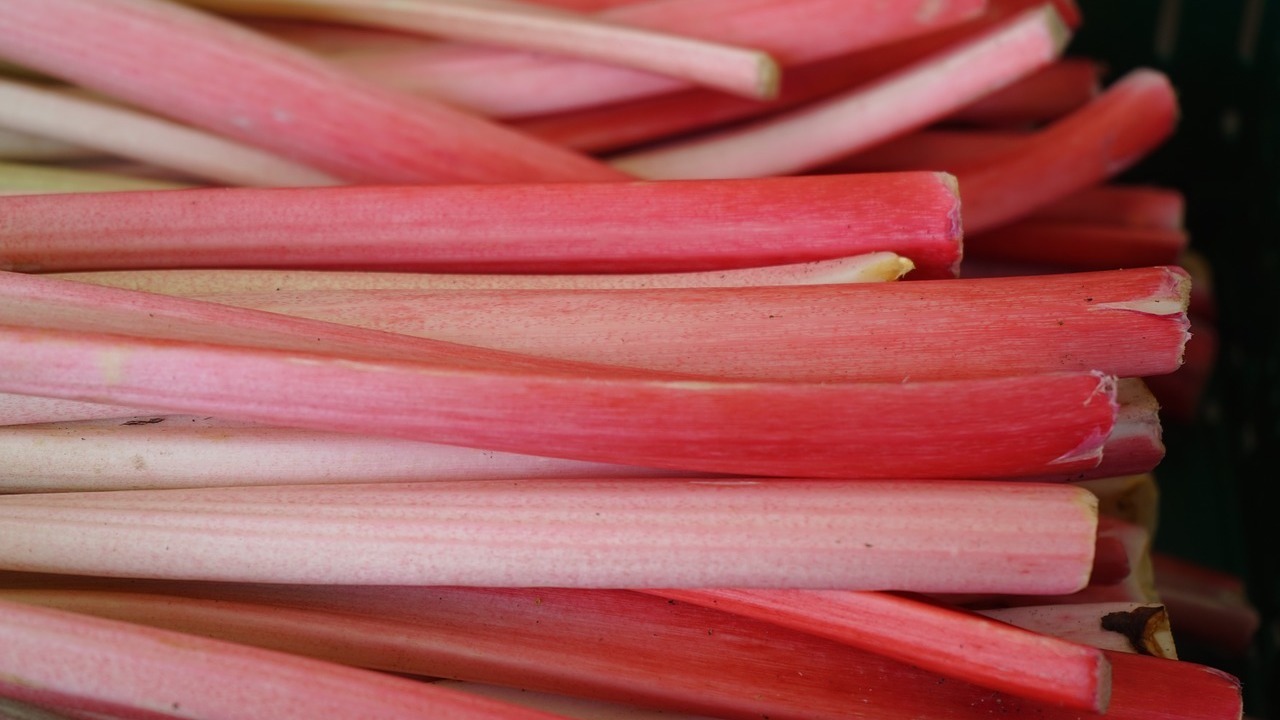What is Rhubarb and Why is it Important to Identify
Rhubarb is a type of vegetable often used in pies and tarts, prized for its tart flavor and crunchy texture. However, rhubarb can be easily mistaken for other plants, some of which are poisonous. Knowing what rhubarb looks like is crucial to avoid confusion with its toxic lookalikes. In fact, many people ask themselves, “what does rhubarb look like?” to ensure they are picking the right plant. Rhubarb’s unique appearance and growth habits make it an interesting addition to any garden or kitchen.
Rhubarb is a perennial plant that belongs to the Polygonaceae family. It is native to Asia and has been cultivated for centuries for its edible stalks and medicinal properties. The plant’s stalks are typically bright red or green, with a crunchy texture and a tart flavor. Rhubarb is often paired with sweet ingredients like sugar and strawberries to balance out its flavor.
Despite its popularity in cooking and baking, rhubarb can be tricky to identify. Its leaves resemble those of other plants, and its stalks can be mistaken for celery or other vegetables. However, rhubarb has several distinct features that set it apart from other plants. By learning what rhubarb looks like, gardeners and cooks can ensure they are working with the right plant and avoid any potential health risks.
In the next section, we will take a closer look at the physical characteristics of rhubarb, including its stalks, leaves, and roots. By understanding these features, readers will be better equipped to identify rhubarb and distinguish it from other plants.
Physical Characteristics of Rhubarb: A Closer Look
When trying to determine what rhubarb looks like, it’s essential to examine its physical characteristics. Rhubarb is a perennial plant that grows from a thick, fleshy crown. Its stalks, also known as petioles, are typically bright red or green, with a crunchy texture and a tart flavor. The stalks can grow up to 2 feet long and 1 inch thick, with a distinctive ridged or grooved appearance.
The leaves of the rhubarb plant are large and triangular, with a pointed tip and a wavy or lobed edge. They can grow up to 2 feet long and 1 foot wide, with a bright green color. However, it’s essential to note that the leaves of the rhubarb plant contain high levels of oxalic acid, making them toxic to humans and animals. Only the stalks of the rhubarb plant are safe to eat.
The roots of the rhubarb plant are thick and fibrous, with a distinctive yellow or orange color. They can grow up to 6 inches deep and 1 foot wide, with a network of smaller roots that absorb water and nutrients from the soil.
To distinguish rhubarb from other plants with similar appearances, look for the following characteristics: a thick, fleshy crown; bright red or green stalks with a crunchy texture; large, triangular leaves with a pointed tip and a wavy or lobed edge; and thick, fibrous roots with a yellow or orange color. By examining these physical characteristics, you can determine what rhubarb looks like and avoid confusing it with other plants.
In the next section, we will explore how to identify rhubarb at different stages of growth, from seedling to mature plant. This will help you to recognize rhubarb in various contexts and avoid any potential mistakes.
How to Identify Rhubarb in Different Stages of Growth
Identifying rhubarb can be a bit tricky, especially when it’s in different stages of growth. However, by knowing what to look for, you can determine what rhubarb looks like at various stages of development. In this section, we’ll explore how to identify rhubarb from seedling to mature plant.
Seedling Stage: Rhubarb seedlings typically emerge in early spring, with two small leaves that resemble tiny versions of the adult leaves. The seedlings are usually around 1-2 inches tall and have a delicate, almost translucent appearance. As the seedlings grow, they develop a small crown and begin to produce new leaves.
Sapling Stage: As the seedlings mature, they enter the sapling stage, characterized by the development of larger leaves and a more robust crown. The saplings can grow up to 6-12 inches tall and begin to produce small stalks. These stalks are usually thinner and more delicate than those of mature plants.
Mature Stage: Mature rhubarb plants can grow up to 2-3 feet tall and produce large, thick stalks with a crunchy texture. The leaves are also larger and more robust, with a bright green color. The crown of the plant becomes more prominent, and the roots begin to spread outwards.
To help you identify rhubarb at different stages of growth, here are some images and illustrations:
[Insert images or illustrations of rhubarb at different stages of growth]
By examining these images and illustrations, you can get a better sense of what rhubarb looks like at various stages of development. Remember to look for the characteristic bright red or green stalks, large triangular leaves, and thick, fibrous roots.
In the next section, we’ll explore some common plants that resemble rhubarb but are actually
Rhubarb Lookalikes: Plants to Avoid
When trying to identify rhubarb, it’s essential to be aware of plants that resemble it but are actually poisonous. Some of these lookalikes can be deadly if ingested, so it’s crucial to know what to avoid. In this section, we’ll explore some common plants that resemble rhubarb but are poisonous.
Poison Hemlock (Conium maculatum): Poison hemlock is a highly toxic plant that resembles rhubarb in its early stages of growth. It has fern-like leaves and a distinctive purple spot on its stem. However, unlike rhubarb, poison hemlock has a smooth, hairless stem and a more delicate appearance.
Giant Hogweed (Heracleum mantegazzianum): Giant hogweed is a large, invasive plant that can grow up to 15 feet tall. Its leaves are similar to those of rhubarb, but they are much larger and have a more rounded shape. The stems of giant hogweed are also covered in fine hairs, unlike those of rhubarb.
Buttercup (Ranunculus acris): Buttercup is a common weed that can be mistaken for rhubarb due to its similar leaf shape and size. However, buttercup has a more delicate appearance and a distinctive yellow flower.
To help you distinguish between these plants and rhubarb, here are some images and illustrations:
[Insert images or illustrations of poison hemlock, giant hogweed, and buttercup]
By being aware of these poisonous lookalikes, you can avoid mistakenly identifying them as rhubarb. Remember to always exercise caution when foraging for wild rhubarb or growing your own rhubarb plant.
In the next section, we’ll explore some tips on how to use rhubarb in cooking and baking, including recipes and preparation methods.
Using Rhubarb in Cooking and Baking
Rhubarb is a versatile vegetable that can be used in a variety of sweet and savory dishes. Its tart flavor and crunchy texture make it a great addition to pies, tarts, and jams. Here are some tips on how to use rhubarb in cooking and baking:
Rhubarb Pie: A classic dessert that combines the tartness of rhubarb with the sweetness of sugar and spices. Simply mix cooked rhubarb with sugar, flour, and spices, and fill a pie crust with the mixture.
Rhubarb Jam: A sweet and tangy jam that’s perfect for toast, yogurt, or as a filling for cakes and pastries. Simply cook down fresh rhubarb with sugar and pectin, and can the mixture in a jar.
Rhubarb Crisp: A delicious and easy-to-make dessert that’s perfect for warm weather. Simply mix cooked rhubarb with sugar, flour, and spices, and top with a crunchy oat and brown sugar topping.
Rhubarb and Strawberry Salad: A refreshing and healthy salad that combines the tartness of rhubarb with the sweetness of strawberries. Simply mix diced rhubarb and strawberries with a vinaigrette dressing, and top with crumbled goat cheese.
When using rhubarb in cooking and baking, be sure to only use the stalks, as the leaves are toxic. Also, be sure to cook the rhubarb until it’s tender, as raw rhubarb can be quite tart.
In the next section, we’ll explore some tips and tricks for growing your own rhubarb plant, including soil requirements, sunlight needs, and watering tips.
Growing Your Own Rhubarb: Tips and Tricks
Growing your own rhubarb can be a rewarding experience, especially if you’re looking to use it in your cooking and baking. Here are some tips and tricks to help you grow healthy and productive rhubarb plants:
Soil Requirements: Rhubarb prefers well-draining, fertile soil that is rich in organic matter. Add compost or manure to the soil to improve its fertility and drainage.
Sunlight Needs: Rhubarb needs full sun to partial shade, depending on the climate. In warmer climates, provide some shade to prevent scorching of the leaves.
Watering Tips: Rhubarb needs consistent moisture, especially when it’s producing stalks. Water the plants regularly, but avoid overwatering, which can lead to root rot.
Planting: Plant rhubarb crowns in early spring or fall, when the weather is cooler. Space the plants 3-4 feet apart, and water well after planting.
Fertilization: Feed the rhubarb plants with a balanced fertilizer in early spring, when the new growth begins. Avoid overfertilizing, which can lead to weak and leggy stalks.
Pest and Disease Control: Keep an eye out for pests like aphids, slugs, and snails, which can damage the plants. Regularly inspect the plants for signs of disease like yellowing leaves or black spots.
By following these tips and tricks, you can grow healthy and productive rhubarb plants that will provide you with delicious stalks for years to come.
In the next section, we’ll highlight some common mistakes people make when trying to identify rhubarb, and provide tips on how to avoid them.
Common Mistakes to Avoid When Identifying Rhubarb
When trying to identify rhubarb, there are several common mistakes to avoid. These mistakes can lead to confusion with other plants, misidentification of edible parts, and even poisoning. Here are some common mistakes to watch out for:
Confusing Rhubarb with Other Plants: Rhubarb can be easily confused with other plants that have similar appearances, such as burdock or dock. Make sure to examine the plant’s stalks, leaves, and roots carefully to ensure it is indeed rhubarb.
Misidentifying Edible Parts: Only the stalks of the rhubarb plant are edible, while the leaves are toxic. Make sure to only harvest the stalks, and avoid eating the leaves or roots.
Not Checking for Poisonous Lookalikes: Rhubarb has several poisonous lookalikes, such as poison hemlock or giant hogweed. Make sure to check for these plants when foraging for wild rhubarb, and avoid them at all costs.
Not Examining the Plant’s Growth Habit: Rhubarb has a distinctive growth habit, with large, triangular leaves and a thick, fleshy crown. Make sure to examine the plant’s growth habit carefully to ensure it is indeed rhubarb.
By avoiding these common mistakes, you can ensure that you are correctly identifying rhubarb and avoiding any potential dangers. In the next section, we’ll summarize the key points of the article and provide a call-to-action for readers to practice identifying rhubarb in different contexts.
Conclusion: Mastering Rhubarb Identification
In conclusion, identifying rhubarb requires attention to detail and a basic understanding of its physical characteristics. By following the guidelines outlined in this article, you can confidently identify rhubarb and avoid confusing it with poisonous lookalikes.
Remember, rhubarb is a versatile vegetable that can be used in a variety of dishes, from sweet pies and tarts to savory soups and stews. With its unique flavor and texture, rhubarb is a great addition to any meal.
Now that you’ve mastered the art of identifying rhubarb, why not try your hand at growing your own rhubarb plant? With the right soil, sunlight, and watering conditions, you can enjoy a bountiful harvest of delicious rhubarb stalks.
Alternatively, try experimenting with new rhubarb recipes in the kitchen. Whether you’re a seasoned chef or a culinary newbie, rhubarb is a great ingredient to work with.
Whatever your next step, we hope this article has provided you with the knowledge and confidence to identify rhubarb with ease. Happy cooking and gardening!


:max_bytes(150000):strip_icc()/GettyImages-173947604-8c7d3214270240deaed1d82ad7375276.jpg)



